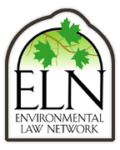
August 13, 2020
Michael Dillon and Megan A. Elliott
MGKF NewsFlash
On August 5, the U.S. Fish and Wildlife Service (“FWS”) and the National Marine Fisheries Service (“NMFS”) (collectively, the “Services”) published a proposed definition of the word “habitat” to be added to the Endangered Species Act’s implementing regulations, 50 C.F.R. § 424.02 (the “Proposed Rule”). The Proposed Rule comes in response to the Supreme Court’s holding in Weyerhaeuser Co. v. U.S. Fish & Wildlife Serv., 139 S. Ct. 361 (2018), sometimes referred to as the “dusky gopher frog case.” In Weyerhaeuser, the Supreme Court held that FWS could not designate an area as “critical habitat” for a species, a decision that subjects the designated area to increased scrutiny, unless such area serves as “habitat” for that species.
Because habitat is not defined by the Endangered Species Act (the “Act”), the Court vacated and remanded the case to the Fifth Circuit to interpret the meaning of the term as used in the Act and to assess the FWS’ administrative findings on the subject. Further proceedings in the matter provided the Services with an opportunity to define habitat themselves before the litigation continued.
Accordingly, the Services have proposed the following definition:
Habitat – The physical places that individuals of a species depend upon to carry out one or more life processes. Habitat includes areas with existing attributes that have the capacity to support individuals of the species.
The Services also concurrently proposed an alternative definition:
Habitat – The physical places that individuals of a species use to carry out one or more life processes. Habitat includes areas where individuals of the species do not presently exist but have the capacity to support such individuals, only where the necessary attributes to support the species presently exist.
The Services are soliciting comments as to which definition should be added to the ESA Regulations. The Services wrote that they were soliciting comments “in particular on whether ‘depend upon’ in the proposed definition sufficiently differentiates areas that could be considered habitat,” or whether the term ‘use’ in the alternative definition “better describes the relationship between a species and its habitat.” The services also are inviting comments on “whether either definition is too broad or too narrow or is otherwise proper or improper, and on whether other formulations of a definition of ‘habitat’ would be preferable to either of the two definitions, including formulations that incorporate various aspects of these two definitions.”
The portion of the alternative definition that reads, “only where the necessary attributes to support the species presently exist,” echoes the primary argument of the Weyerhaeuser landowners, who claimed that FWS could not designate their land as critical habitat for the dusky gopher frog because the land was neither an actual nor potential habitat for the species. While they acknowledged that the disputed area possessed some of the features necessary to be considered habitat for dusky gopher frog, the Weyerhaeuser landowners argued that habitat “cannot include areas where the species could not currently survive” without modifications to the land. See id. at 369. The alternative definition in the Proposed Rule aligns with their argument.
Environmental groups argue that both possible definitions will not be sufficiently protective of endangered species, and that potential habitat must be considered when determining a species’ critical habitat.
The public comment period will be open until September 4, 2020. See the Federal Register online for a downloadable copy of the Proposed Rule. For additional information or questions, contact MGKF’s Michael Dillon (484) 430-2335 or Megan Elliott (484) 430-2333
